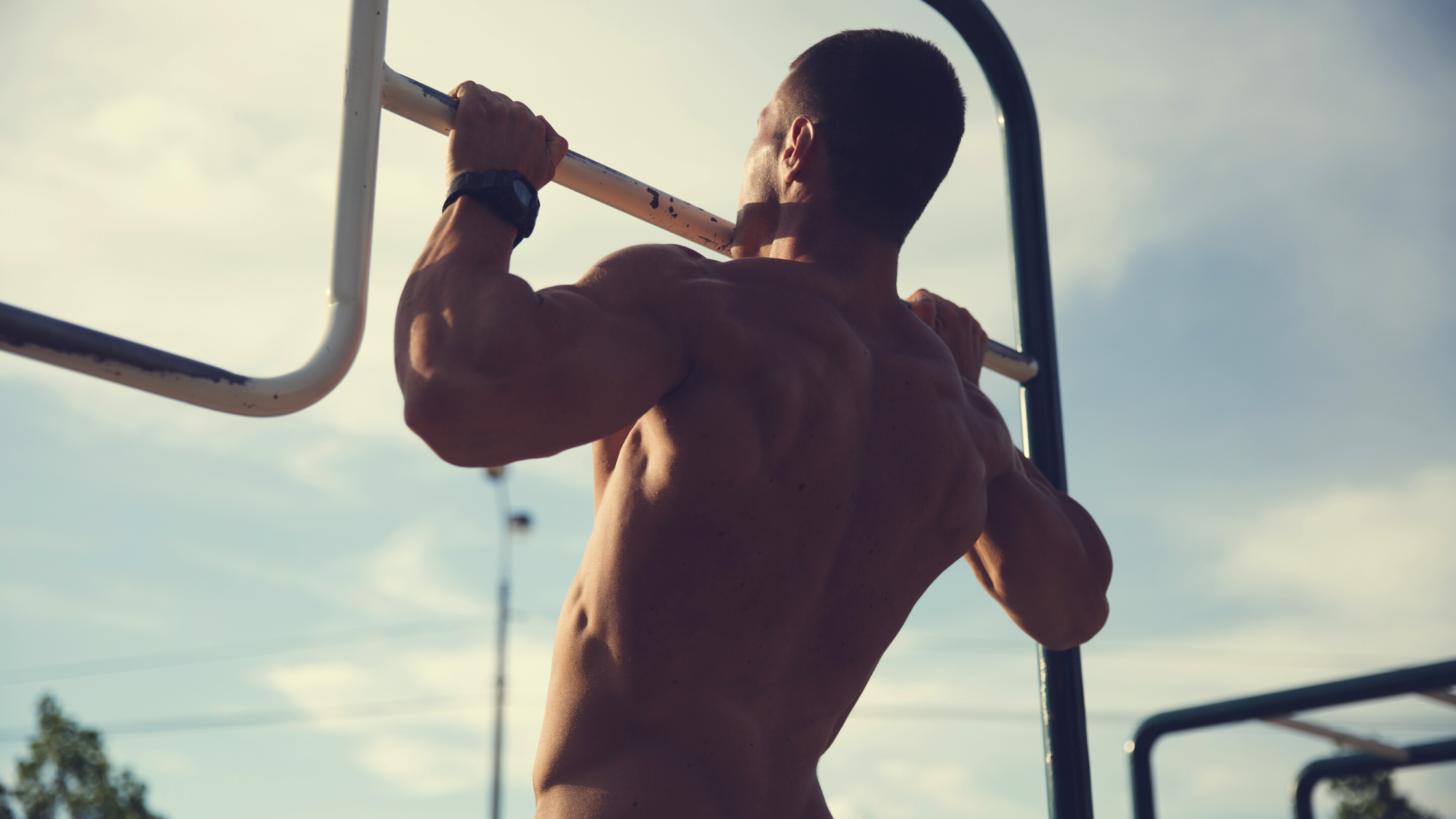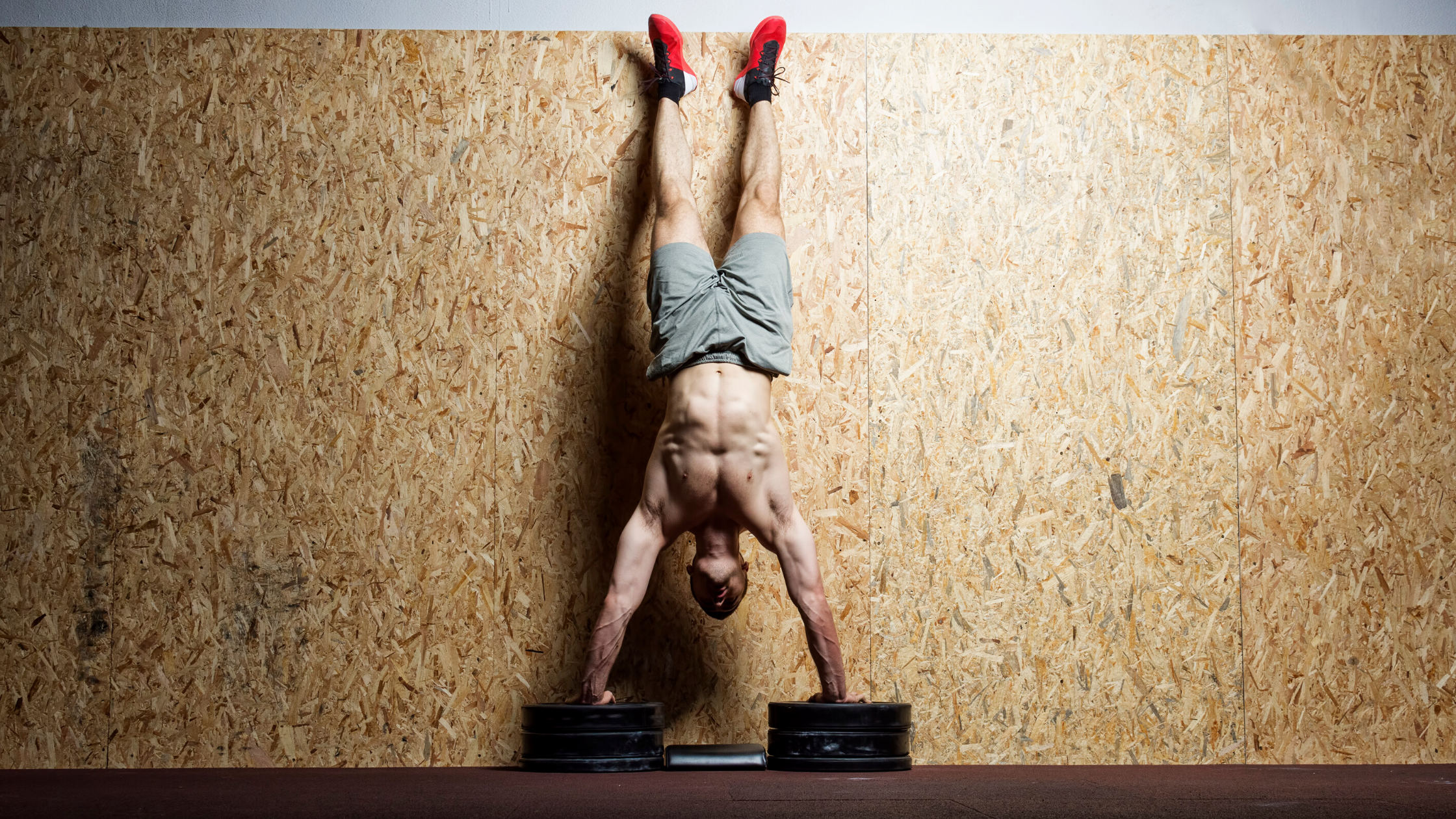How to Build Muscle While Traveling
It is possible to build muscle and get ripped on the road.
If you think you can’t make gains on the road, I’m about to change your mind.
Remove the thinking that you need heavy weights to grow. It’s flat-out, not true. If you’ve ever seen prison workouts, you know what I’m talking about.
There are two key ways to build muscle while traveling: hotel gyms and bodyweight training. I’m breaking down both of them for you so you know what to do.
Hotel Gyms
The average person thinks of a hotel gym and isn’t picturing much to work with. I see a gold mine, no matter how bad it is.
First of all, hotel gyms have gotten a lot better in recent years. Most hotel gyms have a dumbbell rack. Even if the dumbbells don’t go above 50 pounds, it’s not a problem if you know what you’re doing.
Here’s the important thing to remember: check hotel gyms before booking and pick a hotel with a good gym and know how to make proper use of any hotel gym, no matter how bad it is.
Making proper use of any hotel gym comes down to things like volume, isolating muscle, progressions, and increasing resistance - done with dumbbells or bodyweight.
High Volume
Contrary to popular belief, training in rep ranges above 15 reps will make you grow. So grab some dumbbells and start adding volume.
Do sets of 20, 30, or even 100.
You can go high volume in a lot of ways and it’s going to hurt.
Ways to add volume to dumbbell exercises for greater muscle growth:
Century sets (sets of 100)
Rest-pause sets
Giant Sets
Drop Sets
Sets to failure
Isolate Muscles
When dealing with lighter weights, you have to shift away from compound exercises.
These compound movements use multiple muscle groups working together and target one muscle by removing the ability for other muscles to jump in and assist the movement.
Instead, properly isolate the muscle you’re working. Angles and positioning are key to making this happen.
For example, if you’re doing back you don’t want your biceps helping. Think of your hands as hooks and maintain a slight bend in your elbows when rowing.
And the opposite is true. If you’re doing biceps, you don’t want your back jumping in to get the weight up. Drive your elbows into your stomach or pin them to the wall to keep your elbow static.
If the hotel gym is really bad and has no dumbbells or weights to work with, it’s time to turn to bodyweight training.
Bodyweight Training
Bodyweight training is incredibly effective for building muscle if it's done right.
There are two basic ways to make bodyweight exercises effective for building muscle: increasing volume and constantly making exercises harder with progressions.
Using these two principles, you can build muscle with just bodyweight training. They both require patience and discipline to accomplish but are worth the effort.
Volume
The idea with volume is that you have to increase the amount of work you do over time. Our bodies are incredibly adaptive and muscles will stop growing if you constantly do the same thing over and over.
It's simple but not easy.
You have to do more than you did yesterday and more than you did last week to make progress.
One way I found to be effective for measuring this was to set a time mark for me to complete as many reps of an exercise as I could. Here's what this looks like:
Complete as many reps as possible in 2 minutes:
Push-Ups
Week 1: 84
Week 2: 87
Week 3: 88
Week 4: 96
Over four weeks I tested myself and I was able to add more reps each week. Notice that the biggest jump came between weeks 3 and 4.
This should continue beyond just four weeks, this is just a sample to show you what your volume progress should look like.
Entire workouts can also follow this same progression.
For example, I performed the same workout every day for a month. The number of repetitions never changed but the goal was to complete the workout quicker every time I tried. I was performing greater volume in a shorter amount of time each workout.
Another simple rule to follow increasing volume is this: Do 200 pushups throughout the day.
This can be little sets of ten done every half hour or fifty pushups done four times throughout the day. If your maximum is under 50 pushups, do 200 a day. If your maximum is above 75, do 300 pushups a day.
Note that while increasing volume will lead to some muscle growth, the greatest improvement will come in muscular endurance. Incorporating new and progressively harder variations of exercises is key for muscle growth.
Progressions
Exercise has to get harder over time. Our bodies are very adaptive and doing the same thing over and over again will lose effectiveness quickly.
With bodyweight exercises, there are countless variations of each exercise that allow us to constantly make things harder. The key is understanding how we can do this.
Variations
There are many variations to the basic bodyweight exercises we all know that we can use to make them harder and continually challenge our muscles.
You can change body positioning, perform unilateral (one-arm or one-leg) variations, or do half-reps and holds for more time under tension.
Here are some examples of how to make push-ups harder with variations.
Push-Up Variations:
Feet-elevated push-ups
Pike push-ups
One-arm push-ups
Dive bomber push-ups
Handstand push-ups
Wide push-ups
Close push-ups
Then there are isometric holds and slowing exercises down. Both of these are placing your muscles under tension for longer. This means more growth.
Here’s an example of how this may look.
Starting from the up position, lower yourself halfway down. Hold for 5 seconds. Lower yourself all the way down and hold for 5 seconds. Come back up to the starting position. That's one. Do 5-10.
By making simple changes like foot positioning or the pressing angle, you can make push-ups harder. Doing this will keep your muscles guessing, causing them to grow.
You can do the same for your lower body too. Try single-leg squats instead of regular squats. You can elevate your rear leg on a bed or chair.
Work your way up to doing pistol squats. Try single-leg glute bridges to activate your glutes (the most underworked muscle group in many people) in a more challenging way.
You can also take the top part out of a movement. For example, don’t come all the way up on squats or lunges. Come three-quarters of the way up and stop. Hold for a second and then go back down.
The lesson here is to place stress on your muscles with more tension by holding them in the most painful position of a movement or slowing down the exercise.
Resistance
You can also find ways to add resistance to bodyweight exercises to make them harder and more effective for building muscle and strength.
Weighted vests are great but are difficult to travel with.
There are many other ways to add weight to your bodyweight workout. You can use a backpack or suitcase for weight push-ups, pull-ups, and squats.
When traveling, the key is to get creative and think outside the box.
If you liked this article, you'll love this one from our friends at Whatsupp Workout:









